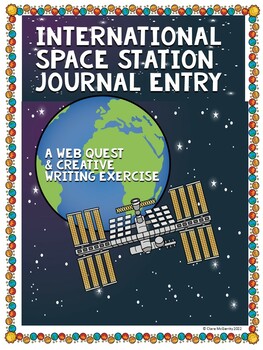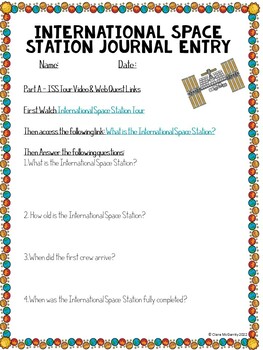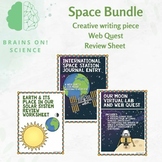International Space Station Journal Entry Middle School
Brains On Science
43 Followers
Grade Levels
6th - 8th
Subjects
Resource Type
Standards
CCSSCCRA.L.1
CCSSCCRA.L.2
CCSSCCRA.L.3
NGSSK-ESS3-1
NGSSMS-ESS1-2
Formats Included
- PDF
- Internet Activities
- Webquests
- Easel Activity
Pages
9 pages
Brains On Science
43 Followers
Easel Activity Included
This resource includes a ready-to-use interactive activity students can complete on any device. Easel by TPT is free to use! Learn more.
Compatible with Digital Devices
The Teacher-Author has indicated that this resource can be used for device-based learning.
Also included in
- This Space Bundle Resource includes my:International Space Station Journal Entry (a creative writing piece)Moon Virtual Lab & NASA Artemis Program Web QuestSpace End of Unit Review Independent PacketAll three products are a great way to close out a Middle School Space Unit!Price $7.00Original Price $8.00Save $1.00
Description
This resource is perfect for an introduction to space for middle school students. Students will watch a virtual tour of the International Space Station, will complete a web quest on the International Space Station, and then will complete a journal entry from the perspective of an astronaut on the International Space Station. This creative writing piece allows students to demonstrate their knowledge on a higher level. Also a great lesson plan for sub plans.
Check out my other space resource:
Total Pages
9 pages
Answer Key
Included
Teaching Duration
2 days
Report this resource to TPT
Reported resources will be reviewed by our team. Report this resource to let us know if this resource violates TPT’s content guidelines.
Standards
to see state-specific standards (only available in the US).
CCSSCCRA.L.1
Demonstrate command of the conventions of standard English grammar and usage when writing or speaking.
CCSSCCRA.L.2
Demonstrate command of the conventions of standard English capitalization, punctuation, and spelling when writing.
CCSSCCRA.L.3
Apply knowledge of language to understand how language functions in different contexts, to make effective choices for meaning or style, and to comprehend more fully when reading or listening.
NGSSK-ESS3-1
Use a model to represent the relationship between the needs of different plants or animals (including humans) and the places they live. Examples of relationships could include that deer eat buds and leaves, therefore, they usually live in forested areas; and, grasses need sunlight so they often grow in meadows. Plants, animals, and their surroundings make up a system.
NGSSMS-ESS1-2
Develop and use a model to describe the role of gravity in the motions within galaxies and the solar system. Emphasis for the model is on gravity as the force that holds together the solar system and Milky Way galaxy and controls orbital motions within them. Examples of models can be physical (such as the analogy of distance along a football field or computer visualizations of elliptical orbits) or conceptual (such as mathematical proportions relative to the size of familiar objects such as students’ school or state). Assessment does not include Kepler’s Laws of orbital motion or the apparent retrograde motion of the planets as viewed from Earth.







